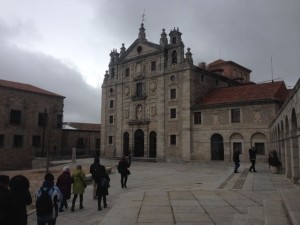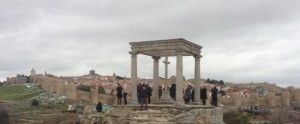Avila is known for its perfectly preserved Medieval walls built in the 12th century.
Avila was founded by the Romans in 1st BC and ruled by them until 5th century when the Visigoths invaded. They ruled until the 8th century when the Arabs invaded and set up their capital in Cordova.
In the 11th century Alfonso VI of Castille retook Avila and built the wall around the city and the church of St Vincent.
Only one tower was finished, which is typical in Spanish churches.
The walls of Avila were built using stones from Roman necropolis which was on the site.
Many Spanish kings of Castile took refuge here in the Middle Ages because the walls were impregnable.
The Cathedral of Avila built in the 13th century in both the Romanesque and Gothic styles.
Many aristocratic families also had palaces in Avila.
We walked through the old Jewish quarter. In 1492, an edict was issued that gave the Jews a choice of conversion or exile. One half chose exile. These Sephardic Jews from the Iberian peninsula went to North Africa or Ottoman Empire. As an apology for this treatment, the Spanish government has offered citizenship to any Sephardic Jew who can prove his descent from those expelled from Spain.
We had a chance to buy candies typical of Avila in a local shop.
The Church of St. Theresa was built in 17th century in the Gothic style. The convent of Carmelites was built on site of her family house.
Outside of town, overlooking the walls of Avila, is a four column monument where St. Theresa took off her shoes to clean them of the trouble she was having w bishop of Avila over her reforms.

















